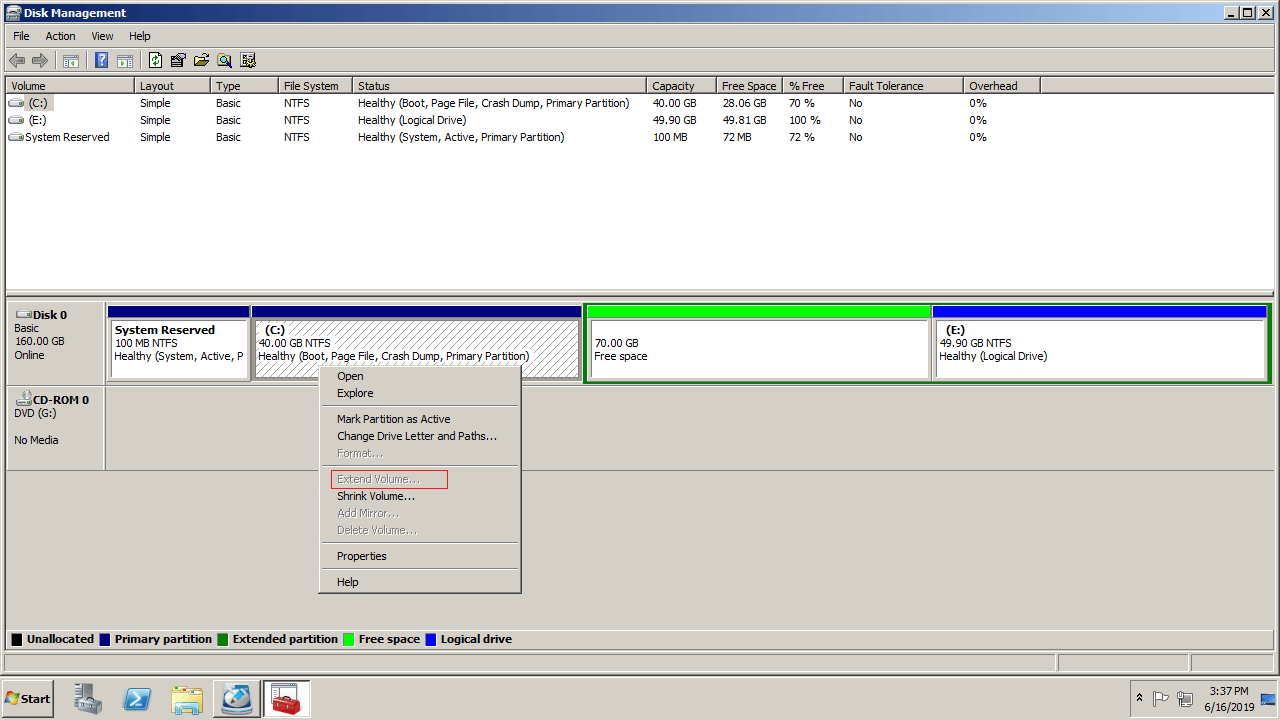

The first command designates partition 1 on storage disk b as a PV. These two command examples are slightly different. To implement LVM, first designate a drive as a Physical Volume.Ĭommand to create a PV: # pvcreate /dev/sdb1 # pvcreate /dev/sdc You can mix and match drive types to create PVs. It is interesting to note that, as opposed to RAID, PVs do not have to be the same size or or on disks that are the same speed. They have identifiers and metadata that describes each PV. Physical Volumes (PV) are disks or partitions that are available to LVM as potential storage capacity.
#Logical volume manager windows install#
Just as we saw above, you must physically install a drive in the server. Obviously, there needs to be a storage disk available. Source: Red Hat LVM Architecture Overview 1. Three hard disk drives are combined into one volume group that is then carved into two logical volumes. The VGs are carved into one or more Logical Volumes (LVs), which then are treated as traditional partitions. The PVs are then added to one or more Volume Groups (VGs). This is accomplished by designating the storage disks as Physical Volumes (PV), or storage capacity useable by LVM. With LVM, those same three disks are considered to be 3 TB of aggregated storage capacity. With traditional storage, three 1 TB disks are handled individually. Storage space is managed by combining or pooling the capacity of the available drives. Traditional storage capacity is based on individual disk capacity. If you need a reminder on /etc/fstab, check out Tyler Carrigan's article An introduction to the Linux /etc/fstab file here on Enable Sysadmin. Configure the space to mount at bootĮdit the /etc/fstab file to mount the filesystem at boot. Note: The -h option displays the output of du in capacity terms that are easy for humans to understand, such as GB or TB. Linux system administration skills assessment.A guide to installing applications on Linux.
#Logical volume manager windows download#

First, create a directory to serve as a mount point. The rest of this process is relatively standard. I'll expand on that idea further toward the end of the article. XFS filesystems can easily be extended but not reduced. While XFS is Red Hat's default, it may not be as flexible when combined with LVM as ext4. You could use ext4 or RHEL's default XFS filesystem. Create a filesystemĬreate a filesystem on the new partition by using the mkfs command. The partition is /dev/sdb1.ĭisplay the capacity by using the /proc/partitions and lsblk content: # cat /proc/partitions # lsblk 3. I won't cover the syntax for fdisk in this article, but assume I created a single partition that consumes the entire 1 TB disk. It's important to note that the partitions cannot consume more than the total 1 TB of disk capacity. Use fdisk or gparted to create one or more partitions. Purchase a one terabyte (1 TB) hard disk drive, and then physically install it into the server. Let's very quickly review traditional storage management. The partitions are entirely contained on the individual hard disk drives. Three 1 TB hard drives with partitions and mount points. For example, if a server has three hard disk drives of 1 TB each, the sysadmin considers the storage literally, I have three 1 TB drives to work with. The result is that when a sysadmin thinks about storage, they do so based on each drive. Storage space is typically managed based on the maximum capacity of individual hard disk drives. I contrast this standard partitioning with an alternative method called Logical Volume Manager, or LVM. I use the phrase traditional storage management to describe the process of partitioning, formatting, and mounting storage capacity from a basic hard disk drive. It also demonstrates some basic commands for each approach. This article compares standard storage management and partitioning to Logical Volume Manager (LVM). However, there are many benefits to rethinking storage management on local servers. Clearly, those strategies work well and are reliable. Server storage capacity has been managed via disk drive sizes and partition configurations for decades.


 0 kommentar(er)
0 kommentar(er)
